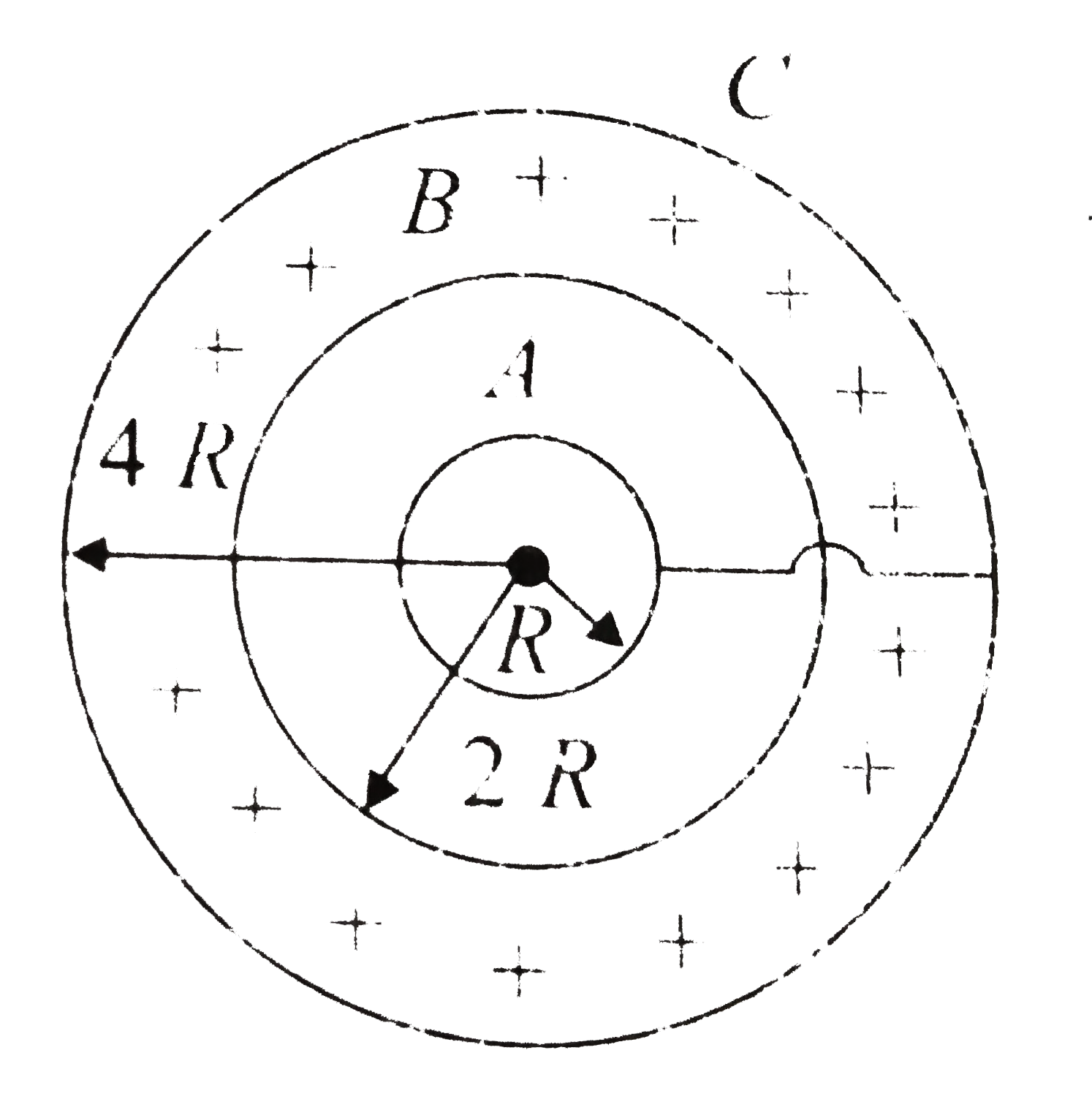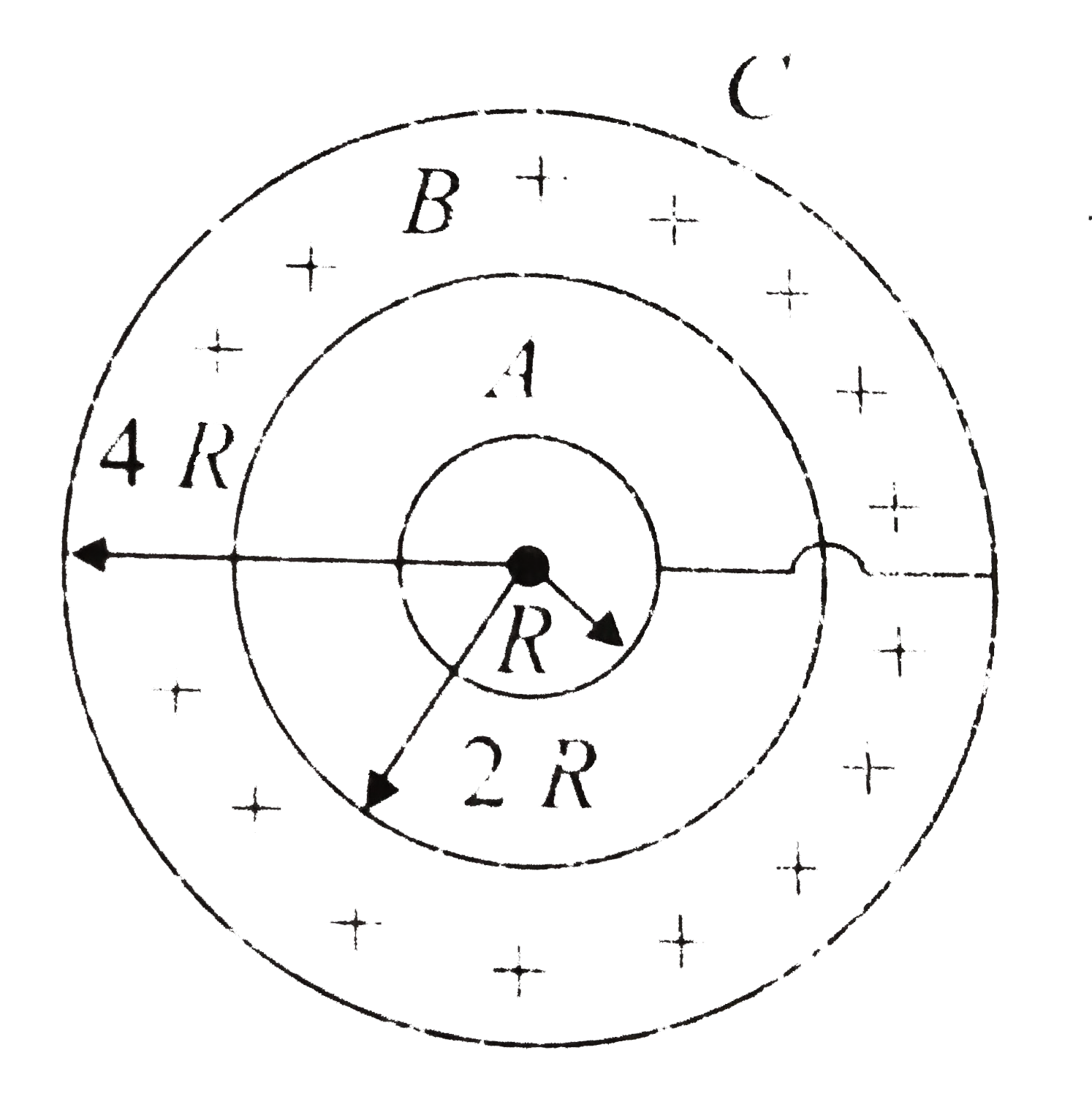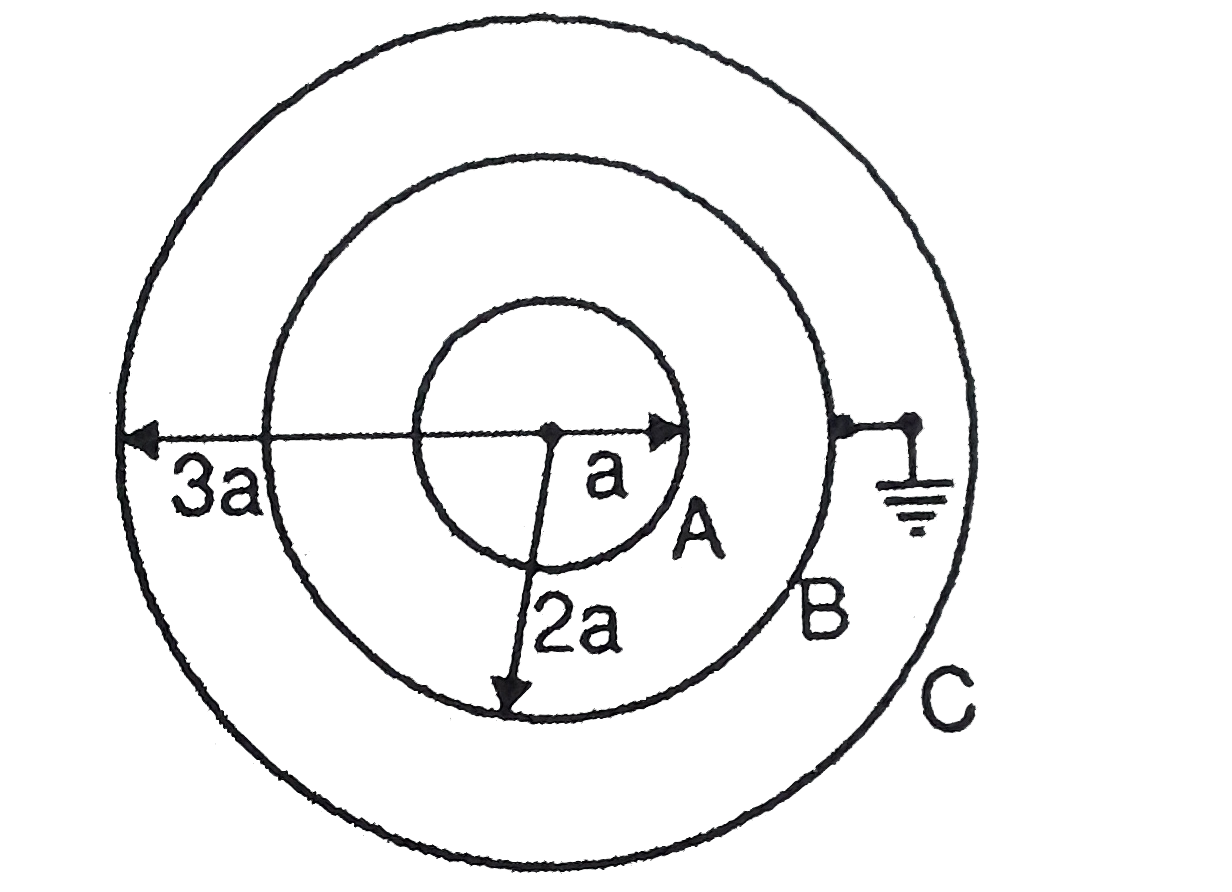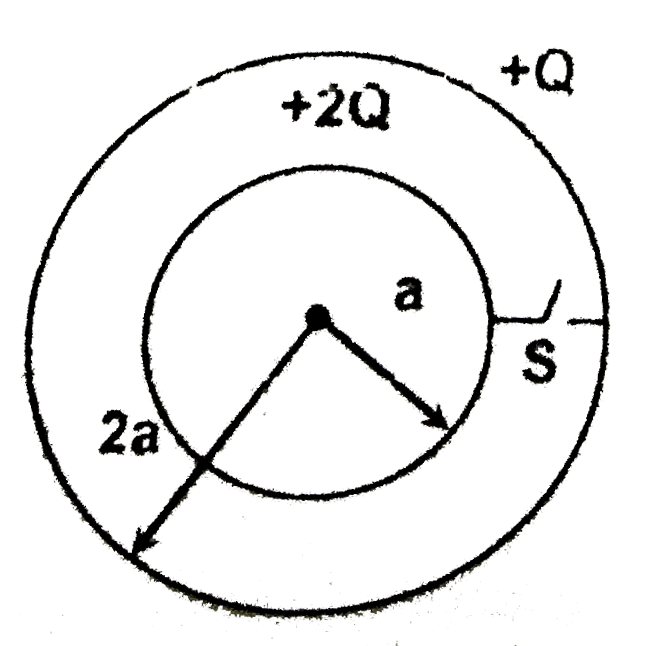There are four concentric shells A,B, C and D of radii a,2a,3a and 4a respectively. Shells B and D are given charges +q and −q respectively. Shell C is now earthed. The potential difference VA−VC is k=(14πε0)
Kq2a
Kq3a
Kq4a
Kq6a
The correct Answer is:D
To solve the problem step by step, we will analyze the situation involving the four concentric shells A, B, C, and D with their respective radii and charges.
Step 1: Identify the shells and their properties
- Shell A has a radius of a and is uncharged.
- Shell B has a radius of 2a and a charge of +q.
- Shell C has a radius of 3a and is earthed (its potential is set to zero).
- Shell D has a radius of 4a and a charge of −q.
Step 2: Understand the implications of earthing shell C
When shell C is earthed, it means that the potential VC=0. We need to find the potential difference VA−VC.
Step 3: Use Gauss's Law to determine the electric field
1. From shell A to shell B (radius a to 2a):
- The electric field E is zero because shell A is uncharged.
- Therefore, the potential difference VA−VB=0.
2. From shell B to shell C (radius 2a to 3a):
- The electric field E due to shell B (which has charge +q) at a distance r from the center is given by:
E=kqr2
- The potential difference VB−VC can be calculated using:
VB−VC=−∫3a2aEdr=−∫3a2akqr2dr
Step 4: Calculate the potential difference from shell B to shell C
- The integral becomes:
VB−VC=−(−kqr)3a2a=kq3a−kq2a
- Simplifying this:
VB−VC=kq(13a−12a)=kq(2−36a)=−kq6a
Step 5: Combine the results to find VA−VC
- Since VA−VB=0, we have:
VA−VC=VA−VB+VB−VC=0−kq6a=−kq6a
- Therefore, VA−VC=kq6a.
Final Result
The potential difference VA−VC is:
VA−VC=kq6a
- Shell A has a radius of a and is uncharged.
- Shell B has a radius of 2a and a charge of +q.
- Shell C has a radius of 3a and is earthed (its potential is set to zero).
- Shell D has a radius of 4a and a charge of −q.
When shell C is earthed, it means that the potential VC=0. We need to find the potential difference VA−VC.
1. From shell A to shell B (radius a to 2a):
- The electric field E is zero because shell A is uncharged.
- Therefore, the potential difference VA−VB=0.
- The electric field E due to shell B (which has charge +q) at a distance r from the center is given by:
E=kqr2
- The potential difference VB−VC can be calculated using:
VB−VC=−∫3a2aEdr=−∫3a2akqr2dr
- The integral becomes:
VB−VC=−(−kqr)3a2a=kq3a−kq2a
- Simplifying this:
VB−VC=kq(13a−12a)=kq(2−36a)=−kq6a
- Since VA−VB=0, we have:
VA−VC=VA−VB+VB−VC=0−kq6a=−kq6a
- Therefore, VA−VC=kq6a.
The potential difference VA−VC is:
VA−VC=kq6a
Topper's Solved these Questions
- ELECTROSTATICSBook:DC PANDEY ENGLISHChapter:ELECTROSTATICSExercise:Comprehension
Explore 36 Videos
- ELECTROSTATICSBook:DC PANDEY ENGLISHChapter:ELECTROSTATICSExercise:Matrix Matching
Explore 2 Videos
- ELECTROSTATICSBook:DC PANDEY ENGLISHChapter:ELECTROSTATICSExercise:Integer
Explore 17 Videos
- ELASTICITYBook:DC PANDEY ENGLISHChapter:ELASTICITYExercise:Medical entrances s gallery
Explore 21 Videos
- EXPERIMENTSBook:DC PANDEY ENGLISHChapter:EXPERIMENTSExercise:Subjective
Explore 15 Videos
Similar Questions
Four concentric conducting spherical shells A, B, C and D of radii a, 2a, 3a and 4a respectively. Shell B and D are given charges q and −q respectively. If shell C is grounded then potential difference (VA — VC) is
View SolutionFigure shows three concentric thin spherical shells A, B and C of radii a, b, and c. The shells A and C are given charge q and -q, respectively, and shell B is earthed. Then,
View SolutionFigure shows three concentric thin spherical shells A, B and C of radii a, b and c respectively. The shells A and C are given charges q and -q respectively and the shell B is earthed. Find the charges appearing on the surfaces of B and C.

View SolutionFigure shows three concentric thin spherical shells A, B and C of radii a, b and c respectively. The shells A and C are given charges q and -q respectively and the shell B is earthed. Find the charges appearing on the surfaces of B and C.

View SolutionThree concentric spherical conductors A, B, and C of radii r, 2R, and 4R, respectively. A and C is shorted and B is uniformly charged (charge +Q).

Potential at B is
View SolutionThree concentric spherical conductors A, B, and C of radii r, 2R, and 4R, respectively. A and C is shorted and B is uniformly charged (charge +Q).

Potential at A is
View SolutionFigure shows a system of three concentric metal shells, A, B and C with radii a, 2a and 3a respectively. Shell B is earthed and shell C is given a charge Q. Now if shell C is connected to shell A, then find the final charge on the shell B

View SolutionTwo concentric conducting shells of radii R and 2R are having charges Q and -2Q respectively.In a region r
View SolutionTwo concentric spherical conducting shells of radii 'a' and 2a are initially given charges +2Q and +Q respectively as shown. The total heat dissipated after switch 'S' has been closed is (where k=14πε0)

View SolutionThere are two concentric conducting spherical shells of radius rA and rB respectively (rB=2rA). If the inner shell is given a charge Q and outer shell is given a charge 2Q, then the potential difference between the surfaces of the shells will be K=14πε0
View Solution
